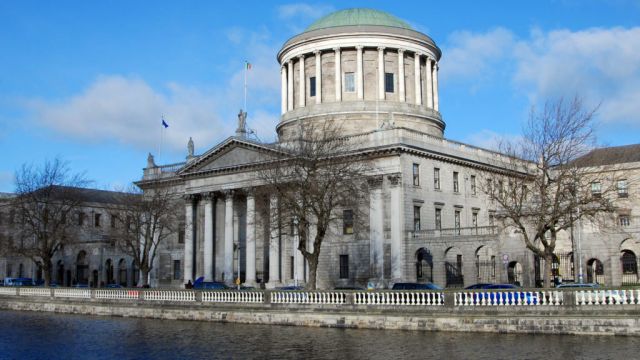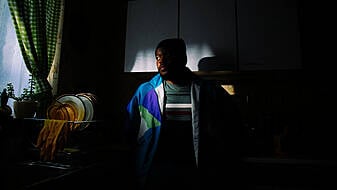A woman who sued the HSE has failed to prove there was a delay in diagnosing her breast cancer.
The High Court’s Ms Justice Mary Rose Gearty ruled this week that Catriona Crumlish, who is now cancer free following invasive treatments, did not establish that there was a 15mm cancer on her breast when she attended at Letterkenny University Hospital in May 2017.
The judge found it was more likely that the radiologist’s report is accurate and that a 12mm cyst caused the lump.
Ms Crumlish (41), sought damages for injuries she alleged were caused by doctors failing to diagnose her breast cancer in May 2017. She claimed a pea-sized lump assessed in May was cancer rather than a cyst.
Academic paper
Her case was that the lump examined in May should have been further investigated and aspirated with a fine needle, the judge said. Had this been done, it was contended, her cancer would have been detected then.
She based her argument, in large part, on an academic paper that analysed the growth rate of breast tumours, said the judge.
The HSE strongly contested the paper’s data and conclusions. The judge found the data might be accurate, but it can also be misleading.
Setting out the background, Ms Justice Gearty said Ms Crumlish, of St Finian’s Park, Moville, Co Donegal, was referred to the hospital by her GP who felt two hard lumps on her right breast.
Ms Crumlish was examined at the hospital in May 2017 by breast surgeon Mr Michael Sugrue, who noted a 15mm pea-sized lump and could not palpate the smaller, peppercorn-sized lump.
He referred her to radiology, where Dr Conal Mac a Bhaird reported “multiple small cysts up to 12mm”. Mr Sugrue reassured her that she had cysts and, while they might change size, she should not worry.
Radiological assessment
In August 2017 she found a lump under her armpit and she found a second lump lower down from her armpit in September, said the judge.
She was referred back to the Letterkenny hospital, where, on October 9th, Mr Sugrue found a deeper lump that was located in the same quadrant of her right breast as the previous lumps.
Following radiological assessment, she was referred for a biopsy. On October 12th Mr Sugrue confirmed she had fast-growing breast cancer. She commenced chemotherapy on November 9th and, in April 2018, had very invasive surgery and then radiotherapy.
Ms Justice Gearty said that, before any alleged negligence could be considered, Ms Crumlish had to establish that the larger lump she palpated in her breast in May was a tumour.
If that could not be established, or if it is likely to have been a cyst, the alleged failures probably did not cause the alleged injuries, the judge said.
Ms Justice Gearty said a “crucial element” of Ms Crumlish’s case was the reliability of the chosen 45-day time period in which her side submitted her cancer would have doubled in size prior to being diagnosed in October 2017.
It appeared to the court that “confirmation bias” accounted for the plaintiff’s selection of a 45-day “doubling” period.
The HSE’s expert witness, Prof John Crown, a consultant medical oncologist at St Vincent’s University Hospital, disputed the cancer growth rate calculations and the underlying research paper being relied on by the plaintiff’s expert witness, Prof Nigel Bundred, a consultant surgeon at the University Hospital of South Manchester.
Prof Crown was highly critical, said the judge, of how the data in the research has evolved into a scale for estimating tumour size, which he said masks the complexity of how cancer grows.
Research paper
He accepted that the tumour discovered in October was present in May, but he did not accept that the size of any tumour in May could be estimated from information about the dimensions of a tumour in October, she said.
Ms Justice Gearty found Prof Bundred was too inclined to select a doubling time rate to accord with the size of the lump in May.
If the doubling time was faster than 45 days, she added, the plaintiff’s calculations “are no longer reliable and the lump and tumour are unrelated”. The probability is that the tumour doubled faster than in 45 days, which leads to the conclusion that the pea-sized lump assessed in May was probably a cyst, the judge added.
Ms Justice Gearty said Prof Bundred’s evidence was “further weakened” by evidence he gave in an earlier High Court case in which he discounted the conclusions of the same research paper.

The judge suspected he had “espoused the plaintiff’s case too closely”. He offered evidence that was often accurate and even valuable. However, the weight of the evidence was “affected by his cleavings to the plaintiff’s account” and appearing to marry the data to that account rather than considering doubling time as a science in isolation, she added.
The court had no doubt that Ms Crumlish’s evidence was sincere. However, the judge said, the medical imaging and notes usually provide more reliable evidence of size, location and appearance of lumps than a patient’s account.
The plaintiff did not prove that the pea-sized lump was a tumour, although all of the medical witnesses agreed the tumour probably was present in May. If so, said the judge, it was probably undetectable at that point.
Ms Justice Gearty said she will hear the parties later in relation to the legal costs of the case.







